|
|
|
' |
 |
 |
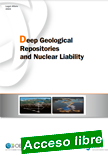 |
Deep Geological Repositories and Nuclear Liability
Nuclear Energy Agency NEA No. 7596, OECD, 2023.
The disposal of long-lived radioactive waste in a deep geological repository (DGR) is a scientifically and technically credible solution that meets the need for long-term safety without reliance on active monitoring and management. Nevertheless, it is important to assess the potential risks that may be associated with such a nuclear installation and to ensure that an appropriate regime is in place to adequately compensate third parties in case they suffer nuclear damage caused by a DGR.
|
Therefore, countries developing or intending to develop DGRs must must take into account nuclear third party liability regime(s) as long as they apply to the disposal facilities. Those regimes establish a specific legal system that deviates from general tort law principles, including strict and exclusive liability of the operator of a nuclear installation, which will have to maintain a compulsory financial security to cover its liability. Given the unusually long life cycles of such installations, this report discusses issues that concern future generations against the background of the currently applicable legal frameworks for the operation of nuclear installations, and existing technical knowledge, conscious that both will evolve. Nevertheless, it is important to identify and address potential issues regarding nuclear liability with the nuclear liability regime(s) during the different phases of operation of the DGR.
|
 |
 |
Integrated Research Reactor Utilization Review (IRRUR) Guidelines
IAEA Services Series No. 48 ¦ 47 pages ¦ Date published: 2023
The Integrated Research Reactor Utilization Review (IRRUR) is an IAEA review service available to Member States to assist them in performing a thorough assessment of the utilization of their research reactors, including their existing and potential capabilities and constraints. The review service also identifies further utilization areas, research and development, and products and services that a research reactor can provide.
|
IRRUR peer reviews are available, upon request, to operating organizations in all Member States with research reactors in operation, or in temporary or extended shutdown.
IRRUR missions can be directed to all the major activities of a research reactor or limited to specific utilization areas. Findings of these missions, including conclusions and recommendations, can be used to inform a Member State’s decision making process in terms of a research reactor’s long term sustainability. The findings can also be used in the development of a strategy towards the sustainable operation — or in the support of national position for a permanent shutdown — of a research reactor. The assessment considers the application of IAEA guidance and international best practices on strategic planning, applications and utilization of research reactors. The purpose of this publication is to provide information on the preparation, implementation and reporting of IRRUR missions, including pre-IRRUR missions and follow-up missions. The information provided may also be used for utilization self-assessments by the operating organization of a research reactor facility.
|
 |
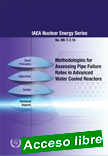 |
Methodologies for Assessing Pipe Failure Rates in Advanced Water Cooled Reactors
IAEA Nuclear Energy Series No. NR-T-2.16 ¦ STI/PUB/2043 ¦ 135 pages ¦ Date published: 2023
This publication, which draws upon the outcome of an IAEA coordinated research project, presents methodologies for assessing pipe failure rates in advanced water cooled reactors (WCRs), including a comprehensive review of good practices for the assessment of piping reliability parameters for advanced WCRs.
|
Good practices are those processes and analytical tasks that would be expected in piping reliability analysis in order for the results to be realistic representations of piping structural integrity. This publication builds on technical insights that have been obtained using different methodologies when applied in multiple analytical contexts and responding to the requirements of different national codes and standards. It provides Member States with a strong technical basis for establishing design and plant centric piping reliability parameters for input into probabilistic safety assessment studies, in-service inspection programme development, and operational support. Additionally, an objective evaluation and inter-comparison of methods used in participating Member States is outlined leading to a harmonization of the practices relevant to newly deployable advanced WCRs.
|
 |
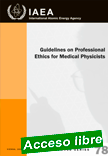 |
Guidelines on Professional Ethics for Medical Physicists
IAEA Training Course Series No. 78 ¦ 23 pages ¦ Date published: 2023
Medical physicists work in a clinical environment and contribute to ensuring safe, quality and effective medical uses of radiation for the benefit of patients. They work as part of a team in fields using radiation for diagnosis and treatment, such as diagnostic radiology, nuclear medicine and radiotherapy. Despite the important roles and responsibilities of medical physicists, recognition of medical physics as a healthcare profession is uncommon.
|
This has several consequences, including the lack of access to comprehensive academic education and clinical training programmes to acquire the competencies needed to practise at the highest standards. These competencies include the knowledge, skills and attitudes pertaining to professional ethics. In March 2021 the IAEA fielded a targeted survey globally to explore the access to and understanding of professional ethics by medical physicists in diverse settings and with diverse experience, specializations and backgrounds. The results were presented at the 63rd Annual Meeting of the American Association of Physicists in Medicine, within the framework of a symposium dedicated to professional ethics in practice for medical physicists. The survey revealed a lack of understanding of professional ethics and a need for training, educational resources and continuous professional development activities on this topic in most settings. The IAEA subsequently conducted consultancy meetings to draft the present publication, which is intended to complement other IAEA publications on professional matters and the education of medical physicists, including Roles and Responsibilities, and Education and Training Requirements for Clinically Qualified Medical Physicists (IAEA Human Health Series No. 25), the medical physics educational series (IAEA Training Course Series Nos 37, 47, 50 and 56 (Rev. 1)) and Guidelines for the Certification of Clinically Qualified Medical Physicists (IAEA Training Course Series No. 71). This publication aims at providing medical physicists with an overview of the basic principles and applications of professional ethics, examples of medical physics related scenarios in which ethical principles are applied and providing information on educational resources.
|
 |
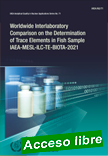 |
Worldwide Interlaboratory Comparison on the Determination of Trace Elements in Fish Sample IAEA-MESL-ILC-TE-BIOTA-2021
IAEA Analytical Quality in Nuclear Applications Series No. 71 ¦ 49 pages ¦ Date published: 2023
The protection of the marine environment is a high priority worldwide. The identification of environmental pollution is based on monitoring campaigns that periodically assess the quality of seawater, marine sediments and biota samples. The reliability and comparability of analytical results produced in this context are crucial for the management of the marine environment in general, for example in taking decisions and meaningful actions related to remediation policies.
|
The IAEA provides support to Member States in the field of data quality and quality assurance by organizing interlaboratory comparisons and producing marine certified reference materials (biota and sediments), characterized for trace elements and the methyl mercury mass fractions. Interlaboratory comparisons involve the comparison of participants’ respective results to an assigned value, which is usually derived as a consensus value from the overall population of obtained results. Their design enables participating laboratories to monitor and demonstrate their measurement performance and analytical competence and, at the same time, allows them to identify existing gaps and problem areas where further improvement is needed. This publication summarizes the results of the IAEA-MESL-2021-01-ILC-TE-BIOTA interlaboratory comparison on the determination of trace elements and methylmercury in fish sample organized in 2021.
|
 |
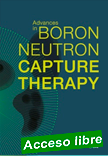 |
Advances in Boron Neutron Capture Therapy
Non-serial Publications ¦ English ¦CRCP/BOR/002 ¦ 416 pages ¦ Date published: 2023
Boron neutron capture therapy (BNCT) is a neutron-based technique that allows selective cancer treatment at the tumour cellular level. BNCT is especially suitable for the treatment of brain, head, neck and skin cancers. Using the reaction between a neutron and boron to selectively destroy cancer cells, BNCT is a treatment that differs radically from conventional radiotherapy and promises to become a more widely adopted option for cancer treatment.
|
BNCT is undergoing a major resurgence of interest around the world as some recent progress in accelerator technology allows the procedure to be undertake in clinics. In addition, the approval of BNCT in Japan as a routine clinical treatment for certain tumour types offers valuable insights for other states considering a similar approach. This publication comprehensively reports on the current state of the science as well as the supporting technology. It covers accelerator-based neutron sources, beam design, physical dosimetry, facility design and operation, pharmaceuticals, radiobiology, dose calculation, treatment planning and clinical trials. It has been written to assist in decision making at the national level as well as offering practical guidance for all those involved in implementation and ongoing management of BNCT programmes.
|
 |
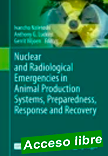 |
Nuclear and Radiological Emergencies in Animal Production Systems, Preparedness, Response and Recovery
Ivancho Naletoski, Anthony G. Luckins, Gerrit Viljoen (eds). Springer, 2021. 206 pages.
This book, the first of its kind, summarizes the critical technical points for effective management of NREs for national veterinary services. Provides the decision-making tools for response to NREs.
|
.
|
 |
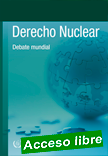 |
Derecho Nuclear: Debate mundial
Publicaciones monográficas ¦ Español ¦ External publication ¦ 405 págs. ¦ Fecha de publicación: 2022
El presente volumen traza el recorrido del Derecho Nuclear: sus orígenes, cómo ha evolucionado, dónde se encuentra actualmente y hacia dónde se dirige. Como disciplina, este cuerpo de leyes altamente especializado nos permite beneficiarnos de las aplicaciones de la ciencia y la tecnología nucleares que salvan vidas y gracias a las cuales se puede, por ejemplo, diagnosticar el cáncer y evitar y mitigar los efectos del cambio climático.
|
La presente obra pretende hacer vislumbrar a los lectores el futuro del derecho, la ciencia y la tecnología nucleares. Aspira a despertar ideas y suscitar debates sobre cómo podemos potenciar al máximo las ventajas de la ciencia y tecnología nucleares y reducir al mínimo los riesgos inherentes a ellas. Este compendio de ensayos presenta una visión global, desde el punto de vista tanto temático como geográfico. Va dirigido a representantes de los gobiernos —reguladores, encargados de formular políticas y legisladores—, así como a representantes de organizaciones internacionales y los sectores jurídico y asegurador. Será de interés para todos aquellos que deseen comprender mejor la función que desempeña el derecho para propiciar el uso de la tecnología nuclear en condiciones de seguridad física y tecnológica y con fines pacíficos en todo el mundo.
Las contribuciones del presente volumen son obra de destacados expertos, entre ellos el Director General del OIEA, y analizan las cuatro ramas del Derecho Nuclear —seguridad tecnológica, seguridad física, salvaguardias y responsabilidad por daños nucleares— y la interacción del Derecho Nuclear con otras esferas del derecho nacional e internacional. La versión original del presente libro, titulada Nuclear Law: The Global Debate, fue publicada por primera vez, en inglés, en 2022 por T.M.C. Asser Press, La Haya (Países Bajos), y producida y distribuida por Springer Verlag, Heidelberg (Alemania), bajo una licencia de Creative Commons del tipo Atribución 3.0 Organizaciones intergubernamentales (CC BY 3.0 IGO). ISBN 978-94-6265-494-5.
|
 |
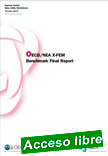 |
OECD/NEA X-FEM Benchmark Final Report
NEA/CSNI/R(2020)117575 ¦ English ¦ Nuclear Energy Agency/OECD ¦ 2022 ¦ 137 pages
This report summarises the work done for the activity: “Benchmark analysis on the eXtended Finite Element Method (X-FEM) calculation technology in its use to evaluate the fracture mechanics stress intensity parameters KI, KII and KIII for different types of loadings (mechanical, thermal) in metal components and structures”.
|
The benchmark study was initiated due to the growing need for an efficient and effective tool that can be used in the evaluation of the harmfulness of a nuclear component or structure. This growing need is inherent to the fact that many nuclear power plants in many countries are reaching the end of their design lifetimes, and these lifetimes have already been or will be extended in the near future. With these extensions, the probability of detecting a flaw or planar crack in components and structures increases. As most of the components of the primary circuit or secondary circuit are not easily replaceable, tools that can estimate the harmfulness of flaws must be available and easy to use for any component and crack(s) geometry. In this context, the eXtended Finite Element Method (X-FEM) may be a useful tool. Until recently, the use of X-FEM has been limited in fracture mechanics analysis in the nuclear industry. X-FEM has only been implemented in a few commercial and research codes.
|
 |
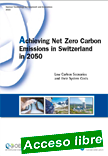 |
Achieving Net Zero Carbon Emissions in Switzerland in 2050: Low Carbon Scenarios and their System Costs
Nuclear Energy Agency NEA No. 7531, OECD, 2022.
With an electricity system defined by high shares of hydropower, large capacity for interconnection with its neighbours and low carbon intensity, Switzerland is well positioned to attain its objective of net zero carbon emissions by 2050. However, the exact pathway remains the subject of discussion. First, what should the shares of nuclear energy and variable renewable energies such as solar PV and wind be in the energy mix? Second, what degree of electricity trade should Switzerland have with its European neighbours?
|
New system modelling of different energy policy choices with the Nuclear Energy Agency’s POSY model shows that all considered scenarios are technically feasible. However, relying on variable renewables alone or decoupling Switzerland from neighbouring countries could increase total system costs by up to 250%. Instead, continuing to operate Switzerland’s newest nuclear power plants alongside existing hydropower resources, while maintaining interconnection capacity at current levels, emerges as the most cost-effective option to achieve net zero emissions in 2050. Ample data and technical documentation of a least-cost mixed integer (MILP) modelling with hourly resolution are also provided in order to allow replication, extension and discussion of this study’s findings.
|
 |
| |
|
|

|
|
|
| |
|
|
| |
| |
|
|
| |
| |
|
|
| |
| |
|
|
|
| |
| |
|
|
|
|
